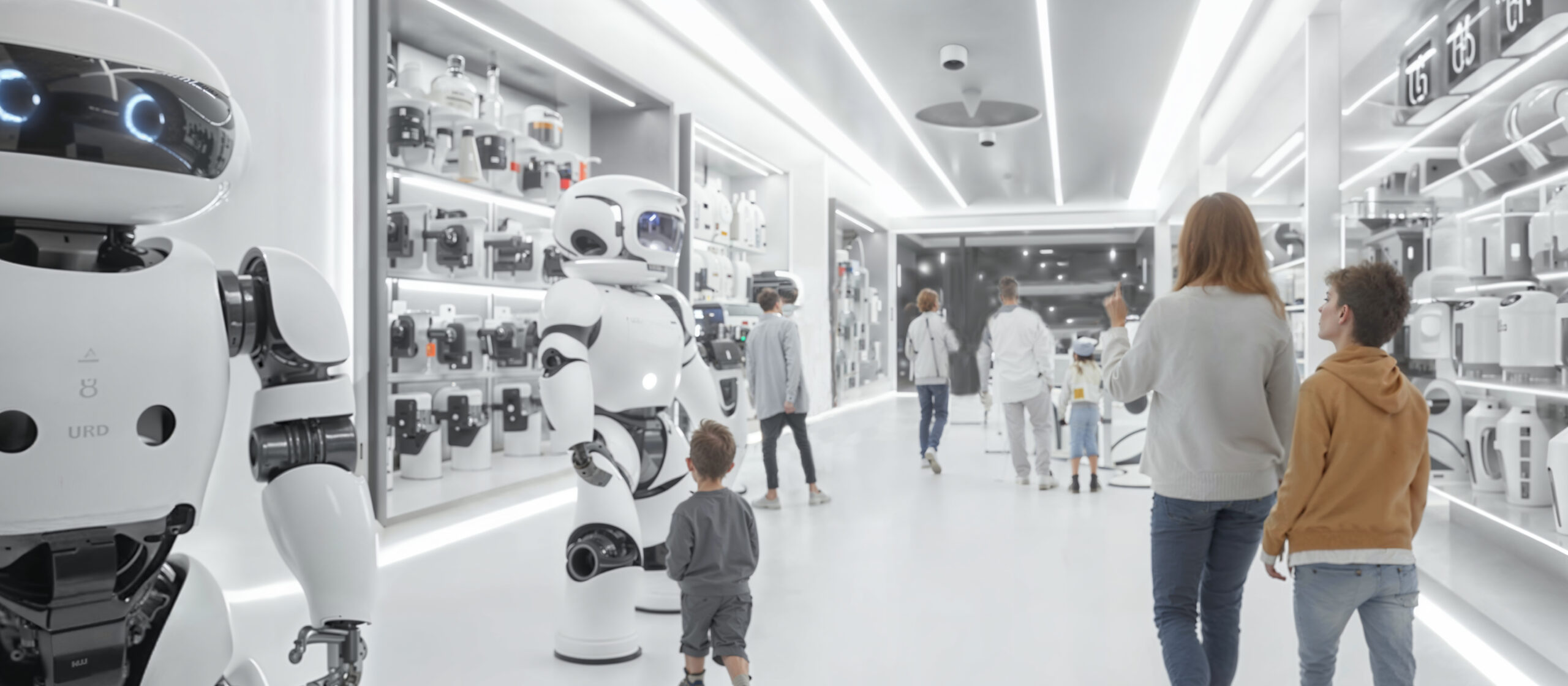×

There’s a growing gap in beauty retail that most brands don’t see coming. Our Director of Strategy, Alexa Jewell Schaefer, shares more in VMSD.

While we do still have a way to go, humanoid robots are poised to become the next major revolution in consumer technology and electronics, blending advanced AI, human-like form, and the ability to perform a multitude of everyday tasks. They will resemble and function like humans, with arms, legs, faces, and the ability to interact naturally with people and their environments. They will be designed to do everything from cleaning and carrying groceries, to providing companionship and assisting the elderly or disabled.
And when these robots move from factories and research labs into living rooms and kitchens, the way we buy, own, and interact with them will transform retail, home life, and society itself. Their inevitable release got us thinking, how will brands retail these humanoids?
Retailing and servicing something that acts and functions like a human, will present a unique set of opportunities and challenges when it comes to the sales process. Perhaps (and maybe Tesla and their Humanoid ‘Optimus’ sways our opinion here) the most comparable current retail channel would be automotive. Humanoids will most likely be a premium product at first, with higher price points, customizable configurations and ultimately, service needs.
Below we explore what types of ‘Experience Centers’ could showcase their specific tasks and overall usage:
High-Tech Showrooms
We believe some retailers will opt for high-tech, minimalist showrooms, displaying multiple robot models side-by-side, allowing direct comparison of features. These spaces will highlight design, technical specs, and modular accessories—think of a cross between an Apple Store and a luxury car dealership. A Humanoid sales bot is an interesting concept, where the robot sells itself. A rack of robots seems to be the least attractive way to ‘merchandise’ their capabilities and benefits of ownership.
Residential Demo Spaces
Other retailers may create demo homes or apartment-like settings, where robots interact naturally in kitchens, living rooms, etc. This immersive approach lets customers see how a robot might help with daily chores, provide companionship, or assist with mobility—making the experience more relatable and emotionally engaging. In essence, the Humanoids would ‘live’ in a residential setting. We secretly hope someone recreates the Jetsons’ home and all Humanoids are named ‘Rosy’ until you change it.
Displaying Models and Modular Accessories
Retailers will showcase robots with swappable accessories and modular attachments – vacuum arms, kitchen tools, or medical aids—demonstrating how easily a humanoid can adapt to different household tasks. Customers may be able to try out or customize these modules in-store, much like test-driving different car features. The first retail outlets will need to be fluid and anticipate changes on the fly as more is learned about the best ways to engage with customers and showcase the technology.
And as for the delivery process, we imagine that will also be an area where retailers can distinguish themselves from competitors.
Amazon, for instance, might provide a logistics-driven delivery. Robots could arrive pre-assembled, delivered by Amazon’s own vans or even autonomous vehicles. Setup may be DIY with guided AR instructions or scheduled with a certified technician.
Tesla might use its own robo-taxi fleet for delivery—imagine a Tesla robot stepping out of a self-driving vehicle and greeting you at your door, ready for setup and onboarding.
Other brands might partner with white-glove tech delivery services, offering in-home assembly, orientation, and initial training as part of the package. The ‘unboxing ceremonies’ for Humanoids could set a new high bar for initial experiences and could be another way for brands to distinguish themselves from the competition. A Humanoid that unwraps its own box and puts itself together part by part simultaneously engaging with its new owner would be magical.
The Road Ahead
In the future, if humanoid robots become as common as cars or smartphones, retail experiences will have to evolve. Some brands will wow with showrooms, others will invite you into robot-powered homes. The buying journey, from demo to delivery to upgrade, will likely be as innovative as the robots themselves. Once these robots become household staples, society will need to adapt quickly, not just to the technology, but to the new ways we buy, own, and live alongside our new robotic companions.


